When Bill Torrey sat down for what was supposed to be a five-minute interview, it didn’t go as scripted. You see, Mr. Torrey always had stories to tell, ranging from his time with his first team, the Oakland Seals, or his last and longest-tenured team, the Florida Panthers. But, the best stories – the ones most people wanted to hear – were from his 20 years and four Stanley Cups with the New York Islanders. Now, those stories will have to be retold by others. On May 2, 2018, Torrey, the Islanders’ first general manager, passed away at the age of 83.
Bill Torrey – The Builder
When Bill Torrey joined the Islanders in February 1972, the team was your prototypical startup, with an eager fan base, zero expectations, and a small staff. In fact, he was the first hire by then-owner Roy Boe. Unlike today’s Vegas Golden Knights, that first season was what you’d expect from a new franchise – forgettable. But for year number two, the man who became known as “The Architect”, made a move that would lay the groundwork for an NHL dynasty: he hired Al Arbour.
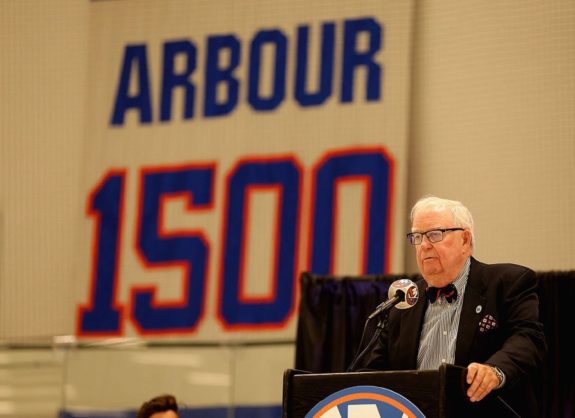
“I think they had one of the most unique partnerships in the NHL,” noted Bob Nystrom who spent his career with the Islanders and won four Stanley Cups. “They talked constantly about players and character … I felt it was a little bit more than a partnership that exists now between GMs and coaches because [today] they’re always trying to protect their own turf. They worked together.”
In fact, Torrey and Arbour worked so well together because they had their roles clearly defined. Clark Gillies, who was a teammate of Nystrom’s on the Islanders dynasty said that if you had an issue with playing time and you talked to Torrey, he’d tell you to talk to Arbour instead.
“I don’t think you’ll find, in my opinion, a general manager and a coach that were on the same page for most of the time,” said Gillies. “They always seemed to be together making the same decisions, the right decisions … So I think you couldn’t find a better combo than those two.”
Former New York Rangers general manager Neil Smith, who was drafted by the Islanders in 1974, moved into the front office as a pro scout in 1980 and got a firsthand look at this unique partnership.
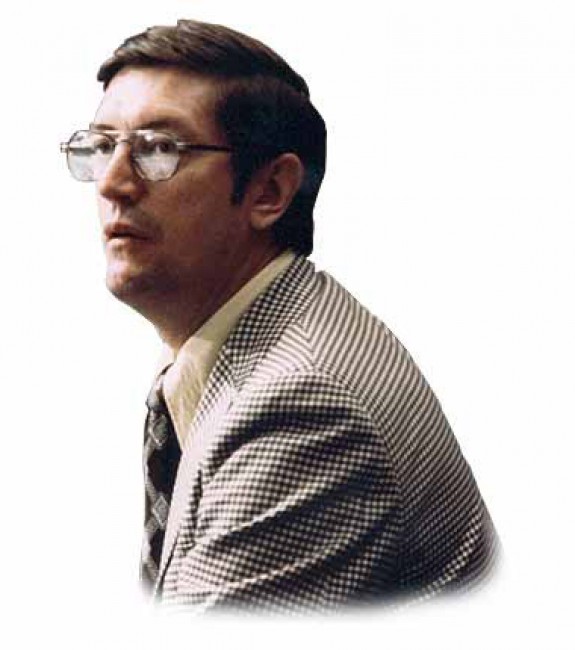
“They were like salt and pepper, meaning you had to have one with the other,” Smith said. “They offset each other. Al was pure hockey. He’d been a defenseman in the league and knew the game really well from his years struggling with glasses on to play in the league. Bill had been an executive for a long time and knew how to run a staff and do contracts and have people out there looking for talent. One did what the other one couldn’t do in my opinion. But, they were like partners in that place … Bill never interfered with coaching and Al didn’t really interfere with management, so they were a perfect tandem.”
The Architect
With Arbour firmly entrenched behind the bench, Torrey began focusing on rebuilding the team from the ground up. He had already added Billy Smith in the expansion draft and drafted Billy Harris, Lorne Henning, and Nystrom in 1972. The next few years he added gold medalist Ken Morrow and future Hall of Famers Denis Potvin, Bryan Trottier, Mike Bossy, and Gillies.
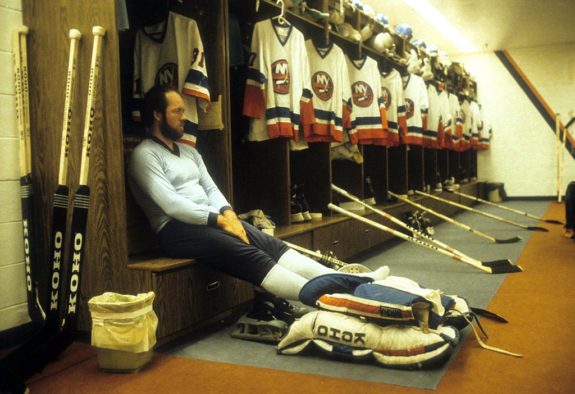
“He was the original builder. He’s the guy in charge of putting the whole team together and I was very fortunate to be drafted by this franchise,” commented Gillies, who was inducted into the Hockey Hall of Fame in 2002. “I have to thank Bill for that, [for] eventually being part of one of the best ever [franchises] … Bill was a true believer in, I think, building from within. He drafted wisely and kept the players that he drafted.”
These young players played an integral role in turning the Islanders around from cellar-dwellers to top of the standings in a short time, and while Arbour coached them on the ice, Torrey also played a role in developing their talent.
“My coach in juniors told me I’d never be drafted unless I fought more. But Bill took a chance and drafted me in the third round,” said Nystrom who was an All-Star in 1977. “The first thing he said when I went down to sign my first contract was ‘I want you to take skating lessons.’ For a Canadian kid that played hockey his whole life that was pretty, pretty harsh. But I took skating lessons with Laura Stamm – she was a power skating instructor. It probably helped me more than I could have ever imagined. He was a guy that was instrumental in making me do that.”
While Torrey was a skilled master at selecting draft picks that would become key cogs in the Islanders’ engine, he was also deft at making trades that would steer the club towards its destiny. The master GM traded for Washington Capitals defenseman Gord Lane who brought toughness to the backend in late 1979, and, in what many consider the greatest trade in Islanders history, for centerman Butch Goring from the Los Angeles Kings in March 1980.
“What it did as far as I’m concerned is that it gave us two experienced centermen with Trots and Butch,” emphasized Gillies. “Both very, very good on the power play. Both very, very smart on penalty killing. So it gave us two solid units to run. Our first two lines were as good as anybody’s.”
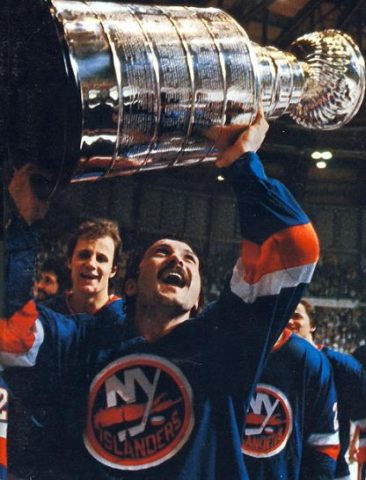
“[Torrey] understood character and how important it was and the players that he gathered had the same common goal,” added Nystrom. “He was absolutely amazing in that respect. The trade he made in ’80 for Butch Goring, that was a deal that put us over the top because Butch came in and was a great second centerman and Ken Morrow [being added to the roster after the 1980 Olympics] was just so instrumental in us winning the Cup.”
Just eight seasons into his tenure as GM of the Islanders Torrey would reach the pinnacle of the hockey world. Between 1980 and 1983 they won four consecutive Stanley Cups, all with Torrey and Arbour leading the charge. Many say the Islanders dynasty will never be duplicated, which isn’t surprising given the turnover in today’s game and the fact that the Islanders had 16 players suit up for all four championship teams. Of the team’s four Conn Smythe Trophy winners, two were drafted by the club (Bryan Trottier and Mike Bossy), one was an expansion pick (Smith) and the last was the player everyone said pulled it all together – Goring.
The Manager
While “The Architect” played a crucial role in moving the Islanders from expansion team to Stanley Cup Champion, the Hockey Hall of Fame member was also deft when it came time to negotiate with his players.
“Well he was pretty harsh,” said Nystrom who always respected Torrey, but knew him to be a tough negotiator when it came to signing a contract. “He protected the ownership and he got the best contract he could with the player. Often times players didn’t like it, but he was a good negotiator.
When I scored the [Stanley Cup Finals overtime] winning goal in the ’80 playoffs, the first offering he gave me was a $5,000 pay cut because he said I didn’t have a really good year.” Nystrom can tell that story with a laugh today because he scored 21 goals that season and had nine in the playoffs, including the clinching goal.
Torrey would also find the best deal outside of the rink.
“Whenever we played golf he always seemed to get the edge,” remembered Gillies, also with a laugh. “I’d say, ‘What’s your handicap?’ He’d go, ‘I need to get five a side’. And he’d turn around and he’d beat the hell out of you and I’d go, ‘Why are you getting five a side’. I shouldn’t have negotiated that deal.”
Fiercely loyal to the Islanders during his tenure, he was also tough when it came to the club’s main rival, the New York Rangers.
“I looked up to Bill so much and was so lucky to be with the Islanders in those early ’80s,” explained Smith, who modeled his management style after Torrey. “Then I went away to Detroit for seven years and I’d see Bill Torrey when I would be at an Islander game and he was always really nice to me. Then I got the job as the GM of the Rangers and of course, Bill hated the Rangers. But I was like, ‘Bill it’s me. Bill, it’s me’ … I think that no matter whatever happened I always would look up to Bill. He was the one who gave me my first chance ever.”
The Legend
When you talk to anyone who interacted with Torrey during his almost 50 years in the NHL, the word ‘respect’ flows freely, whether it was the respect Torrey showed them or the respect they showed him.
“The thing is that it wasn’t only about playing hockey it was about being a better person and understanding your commitment to the community,” expressed Nystrom who, like many of his teammates lived on Long Island long after his playing days ended. “If you look at the folks that played for the New York Islanders, they learned more than just playing hockey. They learned about life and what’s expected of a person and how you can be a better person. It was a great life experience for all of us and I think most of the guys that played for Al and Bill became better human beings because of it.”
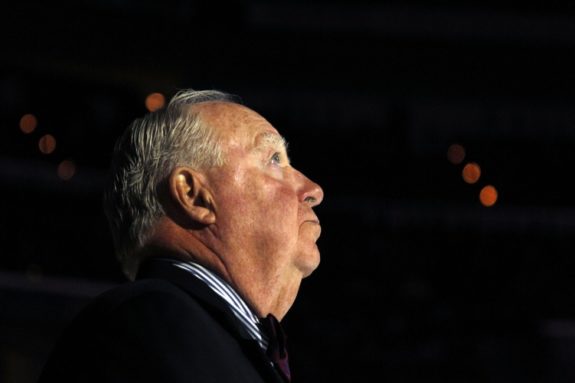
Over the course of his twenty years with the Islanders, Bill Torrey would head to Uniondale on Long Island in his trademark bow tie. He would walk through the Nassau Coliseum’s glass doors and head down the stairs into the bowels of the building. To the right was the Islanders’ offices where he built his team. Ahead of him was the ice where the team would celebrate four Stanley Cups. Hanging high above that ice today is a banner that simply states Torrey “The Architect” with his trademark bow tie.
While it’s been decades since his tenure on Long Island, he left a legacy that will likely not be replicated.
Four Stanley Cups.
William Torrey brought silver to the blue-collar communities of Long Island. But, as Gillies said, “It seemed that everything he did, turned to gold.”
* originally published in May 2018